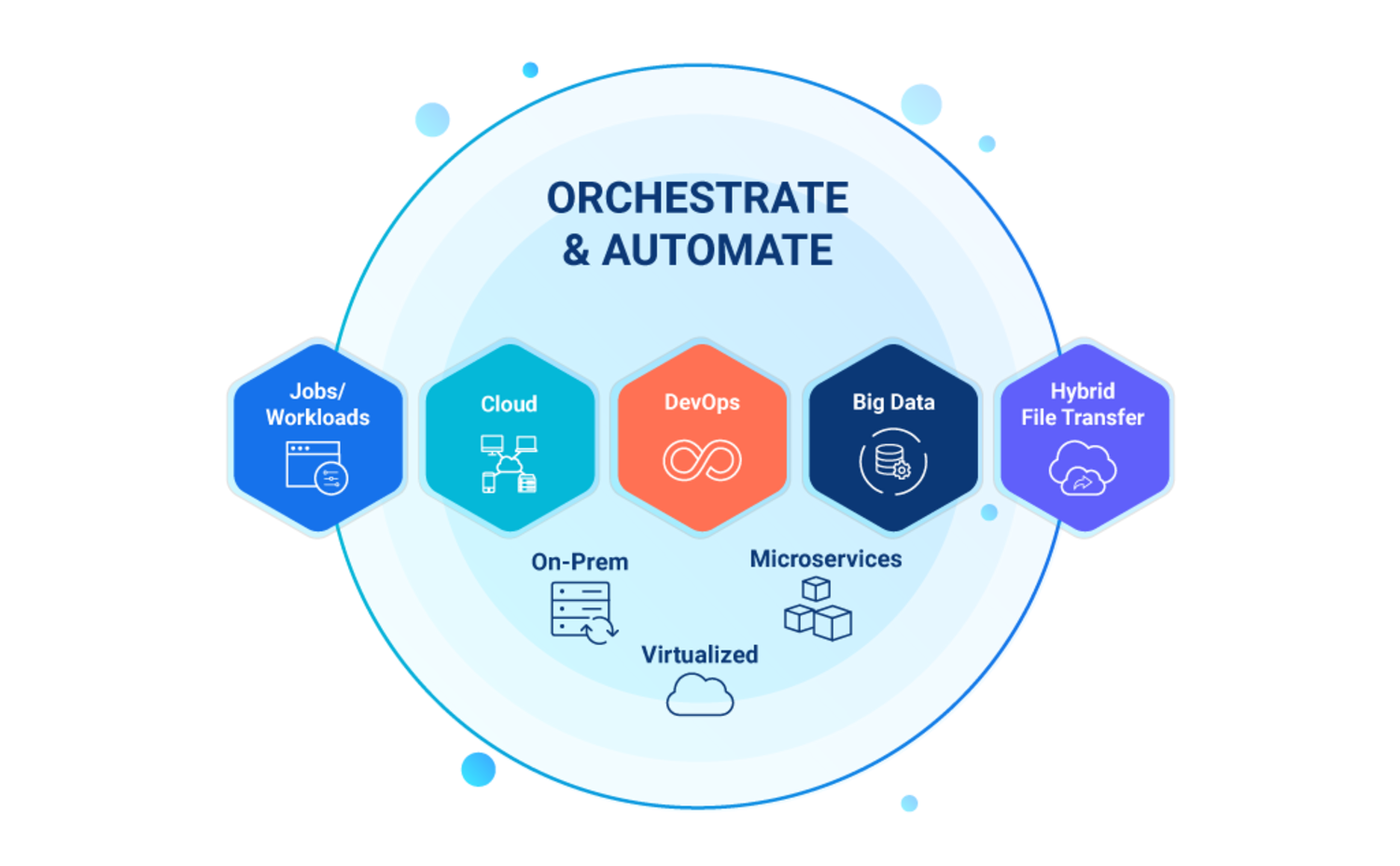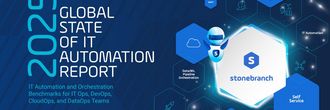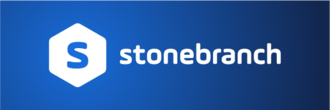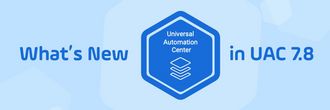Workload Automation is Dead, Long Live Workload Automation!
As organizations moved to hybrid IT environments, workload automation's future was uncertain. But WLA adapted and is now more important than ever. Learn how workload automation is different from, but still central to, service orchestration and automation.

In the theory of evolution, the concept of adaptation is crucial. A species that fails to adapt to a changing environment eventually becomes extinct. By contrast, a successful species adds new traits that help it thrive in changing conditions.
We see a similar dynamic at work outside the natural world. A perfect example is the evolution of workload automation (WLA) into the service orchestration and automation platform (SOAP).
Here’s the story in a nutshell:
- Workload automation experienced a nice boom up until around 2010. It was around that time that WLA vendors reached parity. Also, the WLA market became saturated, meaning that most large enterprises had some sort of traditional WLA solution in place.
- Traditional WLA still had an important role, but it wasn’t evolving; however, a big change in the IT environment gave traditional WLA an opportunity to adapt and thrive. We’re talking about the move that so many organizations are making to hybrid IT. We define hybrid IT as IT systems made up of a mix of infrastructure options, including on-premise, public cloud and private cloud.
- Some IT automation solutions have adapted to support the move to hybrid IT and emerged as service orchestration and automation platforms. Today, true orchestration and automation platforms continue to do what workload automation has always done; however, these new platforms have added important new capabilities that enable enterprises to meet the tactical and strategic challenges of today’s hybrid IT environments.
Keep reading for more on how WLAs evolved into SOAPs, the needs raised by the move to hybrid IT, what SOAPs do that WLAs could not, and how organizations stand to benefit from this evolution.
A brief history of WLA’s Evolution into SOAP
Way back in 2013, Gartner retired the WLA Magic Quadrant. It wasn’t that WLA was no longer important, Gartner stressed. Indeed, WLA “remains a key element in large data center automation initiatives,” the consultancy wrote at the time.
Yet, Gartner concluded that “a singular focus on workload automation will not lead to a successful data center automation solution. This approach, if perpetuated in the data center, will lead to islands of automation, thus obviating the benefits of automation.”
The bottom line, IT organizations were moving toward broader IT automation deployments that encompassed more than WLA. So it was no surprise when, in 2019, Gartner moved WLA off the I&O Automation “hype cycle” and onto the “plateau of productivity.”
In April 2020, Gartner released its first “Market Guide for Service Orchestration and Automation Platforms” In introducing the SOAP category, Gartner’s first finding was, “Traditional workload automation strategies are unable to meet the needs of heterogeneous IT environments that include cloud-native infrastructure and big data workloads.”
WLA strategies, Gartner continued, “need a reboot to cope with the needs of event-driven business models and cloud infrastructure.” Fortunately for I&O leaders, a few SOAPs (including Stonebranch’s Universal Automation Center) are already answering the call.
SOAP is here, but what’s driving organizations to embrace it?
We can all think of much-hyped new products and services that were just solutions in search of a problem. In other words, there wasn’t a true need for the product. What about SOAPs? Are the needs really there?
Intent to acquire SOAPs suggests the need is not only real, but experienced in a widespread way. Gartner reports that through 2024, 80% of organizations using WLA tools will replace them with service orchestration and automation platforms to orchestrate cloud-based workloads.
Why is it that 80% of organizations plan to move to an orchestration and automation platform? It all comes down to meeting the challenges of hybrid IT environments, which SOAPs are equipped to answer:
- Running increasingly complex automation across a hybrid IT, cloud-oriented environment
- Accommodating a growing use of new and emerging technologies, like containers and more sophisticated data pipeline solutions, which IT Ops is responsible for delivering to stakeholders
- Simplifying new demands on IT Ops around collaborating closely with developers using DevOps automation and agile development initiatives
- Meeting growing line of business needs (like faster access to IT actions), while doing so with a perpetual decrease in IT resources and budgets
- Addressing the growing concern about an aging workforce that holds the tribal knowledge around managing legacy environments
How SOAP answers the challenge of hybrid IT environments
An orchestration and automation platform should empower an organization to simplify the management of their hybrid IT environments. It must perform the kinds of tasks that are virtually impossible for humans to do manually: cloud orchestration, workload automation, real-time managed file transfer and more.
The six key capabilities of service orchestration and automation platforms greatly mitigate the challenges IT Ops faces when it comes to managing hybrid IT environments:
- Workflow Orchestration - From a unified view, empower users to design and orchestrate workflows over multiple applications, both in the cloud and on-premise
- Event-driven Automation - Move beyond dependencies on fixed dates and events and schedule real-time workflows based on event-based trigger activities
- Scheduling, Monitoring, Visibility and Alerting - Gain complete visibility into IT processes and improve SLAs
- Self-service Automation - Give business users, developers and other IT teams the tools to orchestrate their own workflows
- Resource Provisioning - Provision compute, network and storage resources in the cloud and on-premise
- Managing Data Workflows - Automate file transfer to help orchestrate big data pipelines
When combined, these pillars become the glue that bonds a hybrid IT landscape together. A platform approach centralizes automation management across the entire environment, which improves agility, efficiency and visibility for IT Ops teams.
Automate and orchestrate anything from a single platform
I&O professionals will want to know which functions, exactly, an orchestration and automation platform will help them automate on a single platform. The beauty of a SOAP, when compared to a WLA, is that it’s designed to be extendable and future-proof across the entire hybrid IT environment, including on-prem, cloud and microservices.
Key solutions of the most capable SOAPs include:
- Jobs/Workloads: The roots of the SOAP are in workload automation. Unlike WLAs, however, SOAPs centrally build, schedule and manage all IT tasks and business processes across the hybrid IT environment.
- Cloud: In addition to on-prem, SOAPs manage hybrid cloud or multi-cloud environments. With this solution, IT Ops can centrally orchestrate jobs and workloads, allowing for management of workflows across a hybrid environment from a single platform.
- DevOps: SOAPs enable orchestration of the DevOps toolchain by centralizing all automated processes within a single solution. Additionally, IT teams use SOAPs for DevOps lifecycle automation by empowering organizations to make use of third-party source-control systems with jobs-as-code. And SOAPs automate infrastructure deployments with infrastructure as code.
- Big Data: SOAPs centralize the automated jobs required to support an organization’s end-to-end big data processes. This includes data collection, automating the ELT solution, automating data tools like Hadoop and automating the distribution of analytics and dashboards to end users.
- Hybrid File Transfer: File transfer plays a key role in supporting an evolution to cloud and keeping data in sync between disparate systems. SOAPs combine an event-based trigger approach with managed file transfer capabilities. This allows for secure real-time movement of data internally or between third-party solutions.

Final thoughts
At its core, workload automation is still important. Compared to where WLA was 10 years ago, however, it’s now part of something bigger—service orchestration and automation. The shift to the cloud and the resulting hybrid IT environments has brought new challenges and complexities to IT Ops. Workload automation has adapted and been reborn into the service orchestration and automation platforms that empower IT Ops meet internal stakeholder demands and achieve value for new customers.
Start Your Automation Initiative Now
Schedule a Live Demo with a Stonebranch Solution Expert





